We’re in the middle of Lent right now, which is a great opportunity for us to dive into movies or television shows that focus on Jesus—His life, His death and His game-changing resurrection. You’ve got plenty of options out there.
The Thorn, a theatrical production that received a limited release this month via Fathom Events, is launching what its makers are calling a virtual cinema event from March 27 through the Easter season. The Resurrection of Gavin Stone, where a former child star is forced to participate in a church Passion play, is on Netflix. Several movies about Jesus, including Mel Gibson’s The Passion of the Christ and 1977’s Jesus of Nazareth, are on Amazon’s Prime Video service. And we’re just getting warmed up.
But movies don’t need to be explicitly about Jesus to remind us of Jesus. Sometimes—intentionally or no—characters who show Christ-like attributes land in wholly secular works. And while many of these Christ figures can be flawed (sometimes very much so), they remind us that God isn’t just at work in explicitly faith-based works: He’s sovereign over all creation, and He sometimes makes His presence known in some unexpected places.
Let me offer five characters who could remind you of Jesus and the work He did for us.
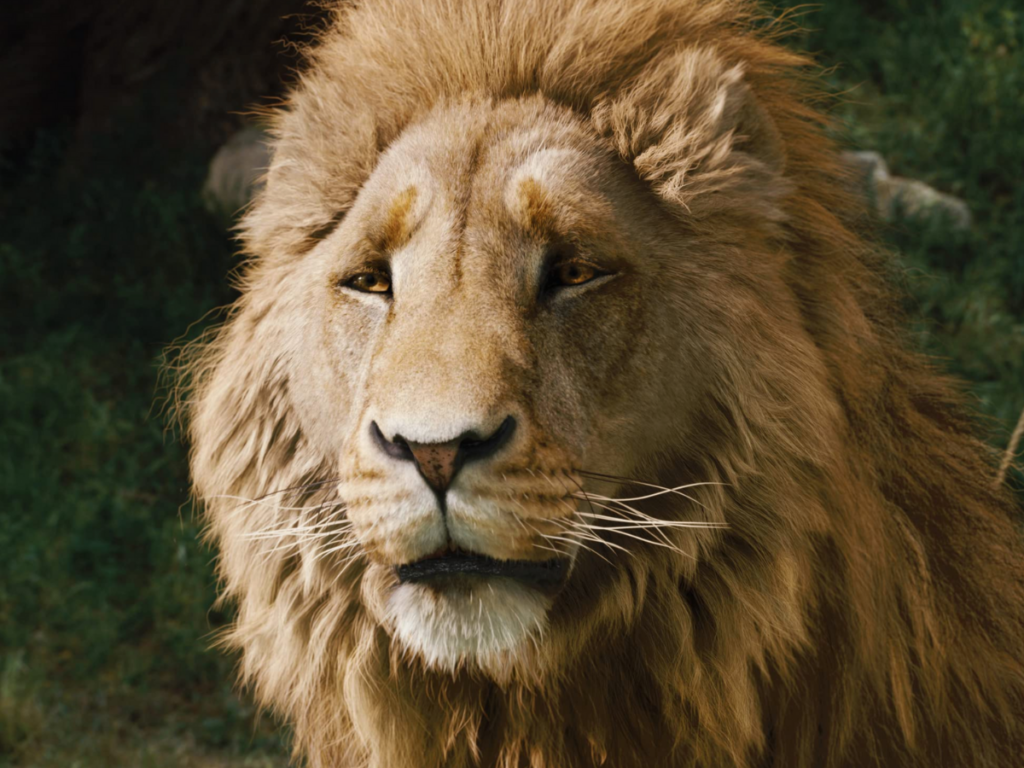
Aslan (The Chronicles of Narnia: The Lion, The Witch and the Wardrobe, 2005)
We’ll start off our role call with a no-brainer. Author and apologist C.S. Lewis designed Aslan, the lion king from his beloved Chronicles of Narnia series, as an avatar of Christ. Aslan himself admits as much in Lewis’ book The Voyage of the Dawn Treader. When someone asks Aslan if he’s in our world, too, Aslan says he is, “But there I have another name. … This was the very reason why you were brought to Narnia, that by knowing me here for a little, you may know me better there.” The Lion, The Witch and the Wardrobe is Aslan at his most explicitly Christlike: sacrificing himself for a traitor before rising again.

Gandalf (The Lord of The Rings trilogy, 2001-03)
Unlike his friend C.S. Lewis, Lord of the Rings author J.R.R. Tolkien was not keen on pure allegory. In his classic fantasy story, you could yank out three major characters that have Christlike attributes (those being Frodo, Aragorn and Gandalf). But for this list, let’s single out the wizard Gandalf. In Tolkien’s backstory (and we see some of this in Amazon Prime Video’s The Rings of Power), Gandalf is sort of an angelic being sent from above, but clothed in the skin of a wizened old man—giving off a definite divine-but-human vibe. In Tolkien’s first book and director Peter Jackson’s first movie, The Fellowship of the Ring, Gandalf takes on an inherently spiritual threat in the fearsome Balrog, which came from the realm of Udûn, sort of the Middle-earth equivalent of Gehenna. The clash could be seen, thus, as a battle between not just good and evil, but between heaven and hell—one in which evil is vanquished, but Gandalf apparently dies. Does he stay dead? Spoiler warning: No! Gandalf returns as a brighter version of himself.
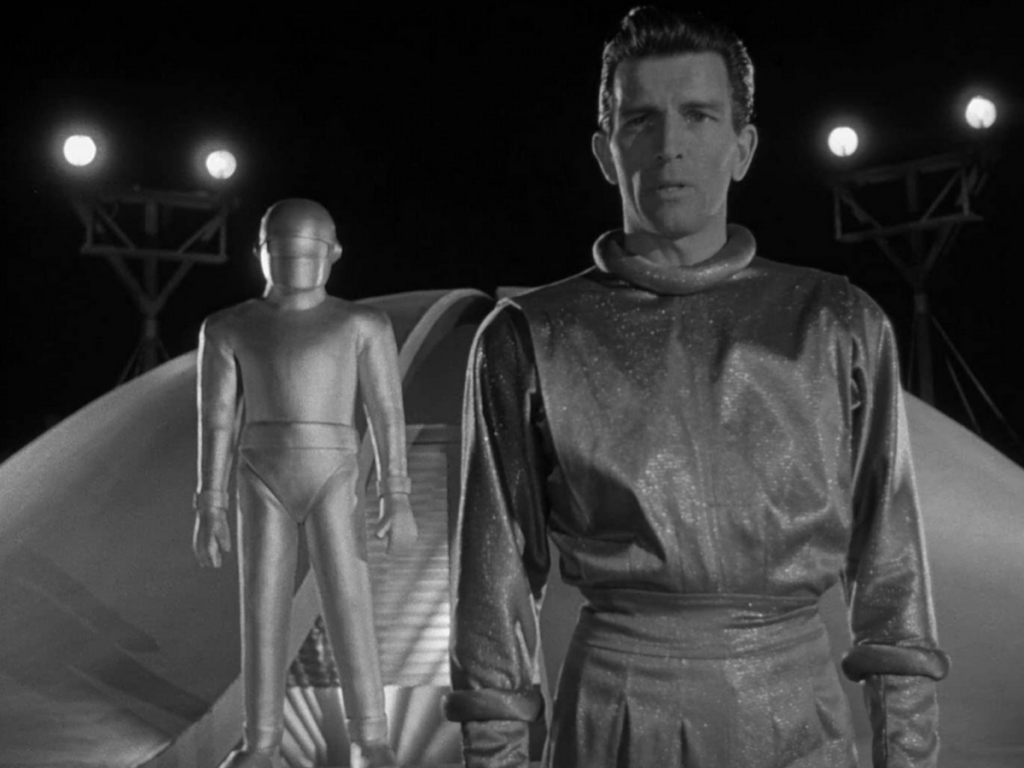
Klaatu (The Day the Earth Stood Still, 1951)
I’m going to bypass the 2008 version starring Keanu Reeves (mainly because I haven’t seen it) and point people to the original sci-fi classic. In the movie, Klaatu, an alien from outer space, visits earth and tries to offer a gift to us humans—and is immediately shot. Klaatu heals himself and decides to wander about the planet disguised as a human named “Mr. Carpenter.” (Get it?) He tries to warn some folks that other planets are getting a little antsy about Earth’s newfangled weaponry (atomic power was a big deal, obviously, in 1951) and aggressive ways. If humankind isn’t careful, he says, the planet could be destroyed (for its sins, as it were). But just when it seems as if Klaatu’s got some human friends, the alien is betrayed and killed—only to be resurrected aboard his spacecraft. While Klaatu tells friend Helen that his resurrection is only temporary, the makers indeed wanted to remind faithful viewers of a more permanent resurrection.
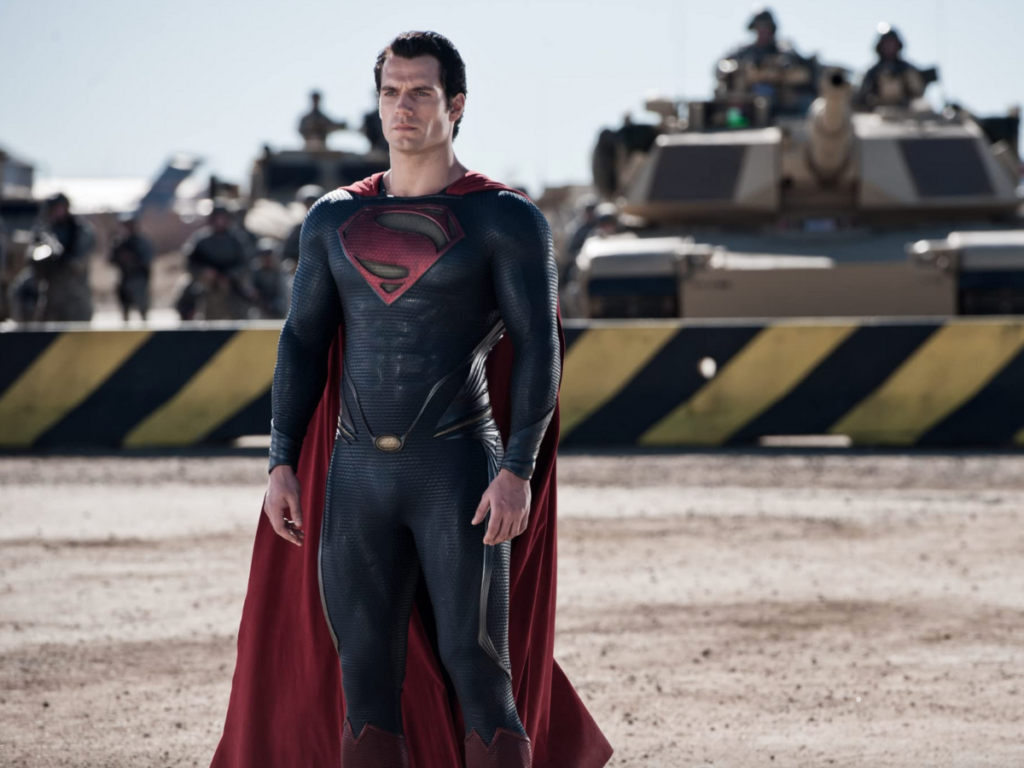
Superman (Man of Steel, 2013; Batman v Superman: Dawn of Justice, 2016)
From the moment Superman first landed in the comics in 1938, he was apparently designed as a Messiah-like figure. His Jewish creators, Jerry Siegel and Joe Shuster, made him an alien savior from a distant planet—someone who looked like us but who was wildly better. More evidence: Superman’s Kryptonian name is Kal-El, which in Hebrew is often translated to mean the “voice of God.” While the Superman at the center of director Zack Snyder’s DC superhero movies is far from perfect (and the movies are far from perfect, either), Snyder does lean hard into Supes’ messianic attributes. And in Batman vs. Superman: Dawn of Justice, he takes an explicitly Christ-like turn—sacrificing himself to save the world from the Kryptonian monster Doomsday. And as Batman, Wonder Woman and Lois Lane mourn poor ol’ Supes, we see a cross in the background.
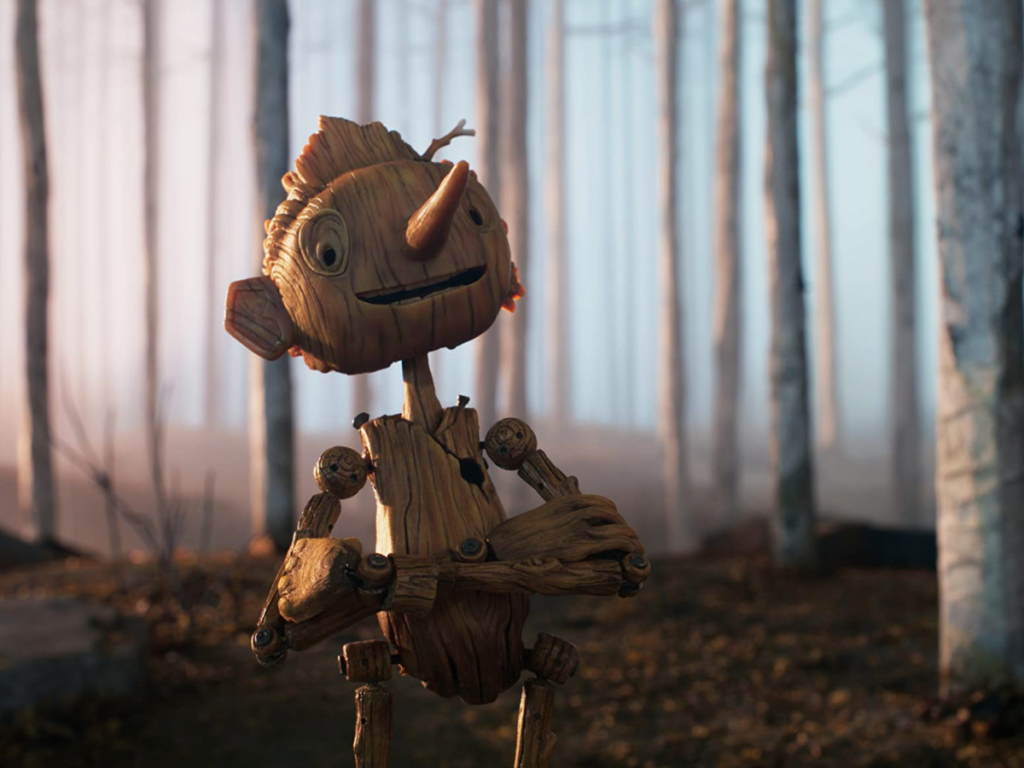
Pinocchio (Guillermo del Toro’s Pinocchio, 2022)
This might be, paradoxically, the most “kid friendly” and the most problematic depiction of a Christlike character on this list. Why? Well, for one thing, director Guillermo del Toro is somewhere between and agnostic and atheist, and his relationship with faith is inherently complex. But he loves to trot out religious themes in his work. And from the very beginning of this film, del Toro wants to make it clear that he’s drawing comparisons between the little wooden boy and Christ. I get into a lot more detail elsewhere, but early on, Pinocchio looks at a crucifix and says he’d like to be a little like the figure hanging from the cross. “Everybody likes Him,” he tells his father, Geppetto. “He’s made of wood, too. Why do they like him and not me?” By the end of the movie, Pinocchio unknowingly follows in Christ’s footsteps, sacrificing himself for his father and is literally hanging on a cross at one point. And while certainly del Toro’s take on faith here is inconsistent and, at times, troubling, Pinocchio still has its share of beauty and profundity wrapped up in it, too.
I could go on. And who knows? Maybe next Lenten season, I will. God’s fingerprints can be found everywhere, even in the movies.



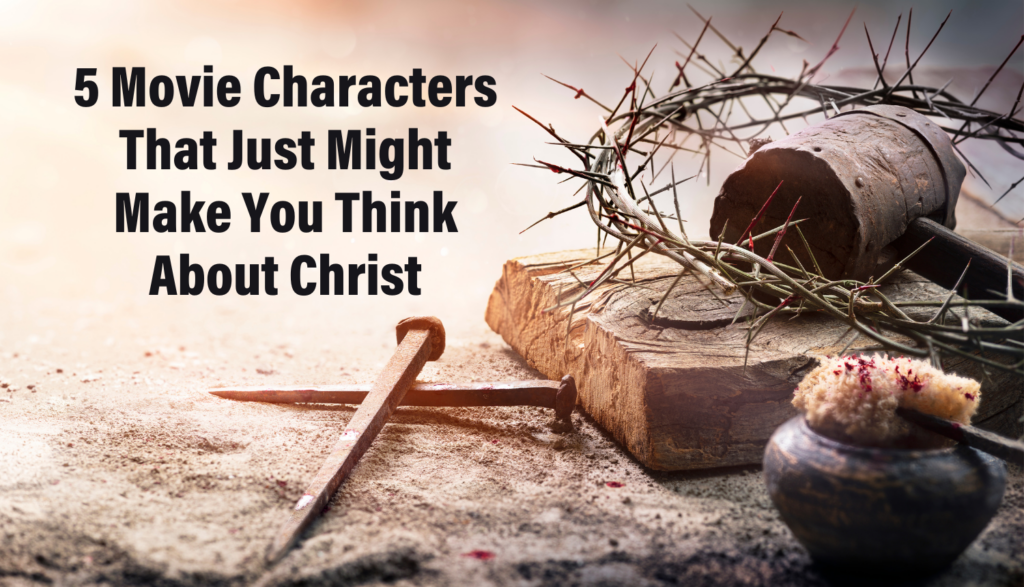



15 Responses
-I think of Optimus Prime from the origanol 1980s cartons.
-Is that why there are so many pictures of Optimus on a cross? I was wondering where those all came from, unless that was from the original movie, which I didn’t watch.
-I always saw Neo from “The Matrix” series as a messianic figure.
-A lot of people did, but those movies contained so many references to various other religions, especially Eastern ones, that a clear Christian message isn’t always easy to distinguish other than Neo spreading his arms out in sacrifice at the end of the third film (I thought it was poignant at first, but it quickly became cheesy, and problematic once someone else pointed out that there’s also a lotus motif). I’ve seen those movies interpreted as everything from Christian allegory to (according to its creator) transgender coming-out allegory (the estrogen medication Premarin in some forms literally is a red pill).
-I liked the first Disney Narnia movie but thought the central scene was too intense for the young children I would have figured would be the movie’s target audience. Paradoxically Prince Caspian had more battles, but they seemed less intense throughout. Never did see the third film.
-I have to agree!!
Thanks so much. Honestly I just thought it was extremely unpleasant to watch, and for young audiences, it would probably have been much worse than that, regardless of the rating.
-I think Harry Potter provides a excellent Christ character, wonder why they didn’t include him.
I agree with you, but despite his storyline’s ending definitely fitting the pattern, I have one BIG guess as to why he wasn’t included.
Harry Potter is a very divisive franchise among Christians due to its heavy use of magic. My family leaned on the side that refused to allow it in our house growing; I’ve only just started reading the books last year and still have yet to see any of the movies.
– Unfortunately, the slight Christian themes in the last movie are not as obvious as they are in the book. I am the same as you, I didn’t read the books until I was in college because my parents were worried about it.
– It is hard to judge HP. I was not allowed to read it until I was in college. When the final movie came out I was in college and I decided that I should probably find out more, and I read the Plugged In review. It was actually the movie review here that made me want to read the books specifically because I was interested in the comparisons to Christianity.
The Christian allusions are there, but they are rare and Rowling herself said that she did not want to mention Christian themes in the earlier books lest it give away the story.
Being a fan of the Narnia and Lord of the Rings novels and the original Star Wars trilogy, I enjoyed much of Harry Potter. However, I see the popular culture going to paganism and worry that HP could make things seem harmless that aren’t. I mean, in HP magic does not have anything to do with contacting demons, but they still have classes in divination (reading tea leaves and crystal ball gazing) which are things we are forbidden from doing as Christians. I also began to like ghost stories after reading HP, which previously I had avoided. I don’t think there is much danger for Christian teens to read the books, but it is still something that is difficult to endorse when there are other great novels to read.
Even though I didn’t read it as a kid, I am only a year or two younger than the actors, so I saw so much advertising as a kid and feel an emotional connection to Harry Potter anyway. Like, I love the story, but I am okay with the fact I waited to read it.
-My personal (admittedly obscure) favorite, Hiryuu the Crimson Dragon King from Yona of the Dawn (Akatsuki no Yona).
Hiryuu, the king of the dragon gods, helped establish Kouka Kingdom to give the humans a safe place and even became human himself to dwell with them. But the humans chose to war against their gods and tried to kill Hiryuu. He was protected by the Four Dragons who urged him to return to the heavens and destroy all of humanity. But Hiryuu loved the humans despite their betrayal and once the war was won, he stayed in Kouka as their king. Being away from the heavens robbed Hiryuu of his powers and left him weak. But couldn’t bear to leave the humans he cared for so much without a leader. And so he stayed with them, with the avatars of the Four Dragons by his side, until he eventually wasted away, satisfied that the kingdom was at peace.
It’s such a good series and I’m still bummed it only ever got one season. The manga is just so good.
I don’t think Zac Snyder has ever directed a Superman movie; are we sure we’re not talking about Zack Snyder?
– Yeah, the spell checks could use a bit of a use here. That said, if we’re going to bring up Man of Steel and BvS, I suppose we could also bring up Justice League (never saw the original version but I adored Snyder Cut so much).